Samsung Galaxy S 2 (International) Review - The Best, Redefined
by Brian Klug & Anand Lal Shimpi on September 11, 2011 11:06 AM EST- Posted in
- Smartphones
- Samsung
- Galaxy S II
- Exynos
- Mobile
SGS2 Intro
The road to our Galaxy S2 review has been a long one. The first time we saw the device was at Mobile World Congress, where it was initially announced. There, Anand and myself played with and hurriedly benchmarked one and came away more than a bit disappointed with performance. I set my expectations based on our initial experience and came away from the conference prepared to be underwhelmed when the device launched internationally and stateside. There was never any doubt in my mind that the device would be a runaway success just like the first one, but I still came away disappointed.
Boy was I wrong. The device that launched internationally is completely different, in the positive sense.
It took a long time for us to get an international Galaxy S 2 in our hands, but we finally got one, and for the past few weeks I’ve been using it as my primary device here in the US on AT&T. It’s not an exaggeration at all to say that we’ve received more requests for a Samsung Galaxy S 2 (henceforth SGS2) review than any other smartphone, by at least an order of magnitude. The tomes of information already written about this phone has made it all the more daunting to dive head-first into a comprehensive exploration of the device, and we’ve tried to do our best.
Physical Impressions
First things first, how does the phone feel? I keep going back to MWC because that’s when first impressions were made, and thankfully in-hand feel didn’t change at all since then. The SGS2’s back eschews the plasticky smooth back of the previous SGS, and instead includes a textured battery door which snaps on. The new battery cover doesn’t wrap around to the front, instead only snapping into the back. There’s a notch in the top right which you can get a thumbnail into and pry the battery cover off with.
Moving to a textured surface instead of the SGS’ oft-derided slick plastic back gives the device a much needed boost of in-hand-feel. When I first encountered the phone at MWC I was shocked how much of a difference this simple change made. The edges are still lipped in smooth glossy plastic, but on the whole the device feels much more competent than SGS1. It appears to be the same material, but now there’s much less of a propensity for scratching or slipping around. I feel like the design language of the original SGS is still here, but it’s all grown up.
It’s impossible to go any further without noting just how thin the SGS2 is. Samsung has taken something of an obsession with holding the thickness crowns for its products, something the SGS2 did indeed hold for some time, at 8.49 mm at its thinnest point. Like the other SGS phones, there’s a bulge at the very bottom which throws a bit of a wrench into the device being completely uniform in profile. It is here that Samsung also locates antennas and the loudspeaker, though the real purpose for this bulge seems to be at least somewhat ergonomic. This bulge is around 10.1 mm thick, which is 1.61 mm thicker than the rest of the phone. For comparison, the old SGS was around 10.0 mm thick all over. As a result, the SGS2 is on the whole noticeably thinner, all while dramatically increasing power and features which we’ll get to in a moment.
Next up is the relocation of the microUSB port. The original SGS’ microUSB port placement drew a lot of discussion, as it’s at top left and behind a small door on the international variant and most regional variants. The SGS2 however relocates the microUSB port to dead center of the bottom face of the device, and just right of it is the primary microphone port. I got used to seeing the microUSB port up top and understood that choice, but having things at the bottom just feels more natural.
The volume rocker and power button are placed basically in the same position on SGS2 as the previous generation. Power is on the right about three quarters of the way up the right side of the device, and volume on the left side positioned with the top of the volume rocker in-line with the top of the power button. Thankfully these buttons are communicative and clicky as ever, I can’t find any fault with them.
There’s a notch which looks like the slot for a hand strap just above the volume rocker. There’s no microphone attached on the inside to this area, so it’s a bit unclear to me what this is for if it isn’t for a hand strap.
At top is another microphone port for both noise cancellation during calls using a discrete solution by Audience. Right next to it is the standard 3.5mm headphone jack.
The front of SGS2 is one unbroken glass surface, just like you’d expect for a top-tier smartphone launching this generation. Starting at the top is the 2 MP front facing camera, and right next to it is the proximity sensor and ambient light sensor. Of course, the real centerpiece is the 4.3" WVGA Super AMOLED+ display (henceforth SAMOLED+) which we’ll talk more about in a moment.


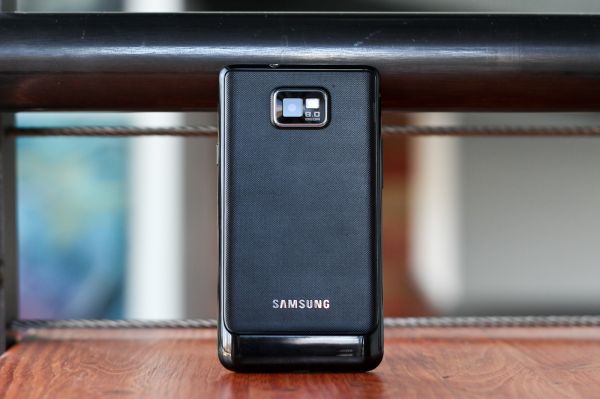

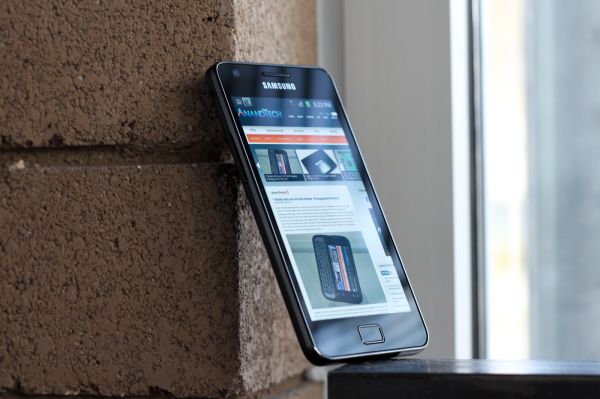
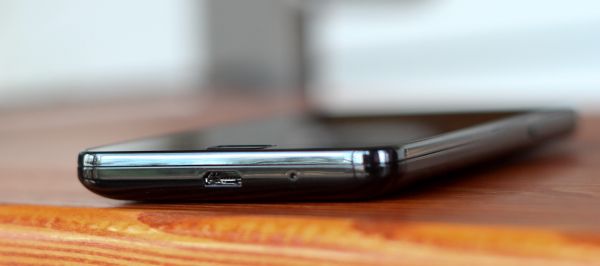
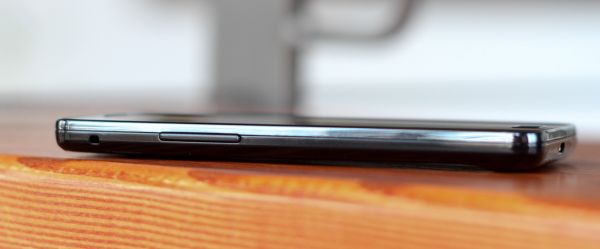
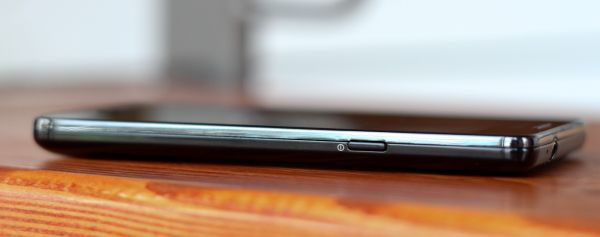
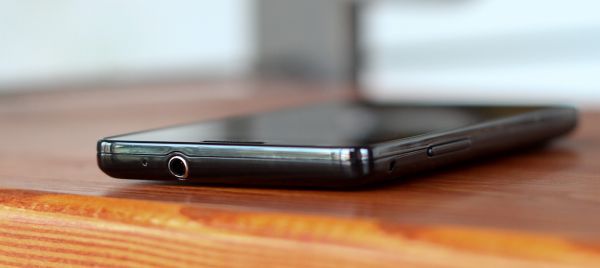
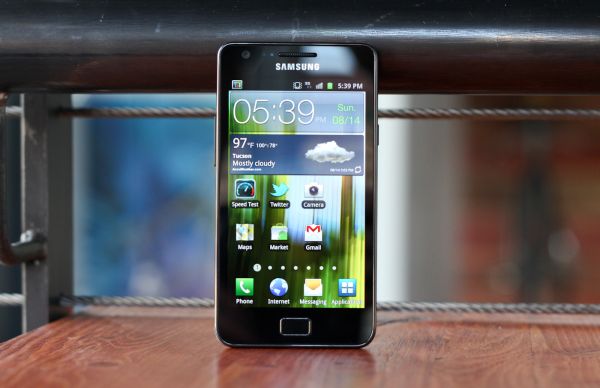








132 Comments
View All Comments
numberoneoppa - Wednesday, September 14, 2011 - link
Guys, that mysterious notch you write about is not for straps, it's for phone charms, and it's arguably my favourite feature of samsung phones. (In korea, phone charms can be used for more than just cute things, one can get a T-money card that will hang here, or an apartment key).Tishyn - Wednesday, September 14, 2011 - link
I spend hours every week just browsing through reviews and tests comparing devices and vendors. This is one if the most interesting and most comprehensive review I've read for a veery long time.I especially enjoyed the rendering part and how it relates to the ultra mobile device market. Thumbs up!
milli - Wednesday, September 14, 2011 - link
Brian / Anand, why are you so reluctant to test chips from this company? ZiiO tablets, sporting the ZMS-08, are available for a while now and i'm sure Creative would send you the new Jaguar3 tablet (ZMS-20) if you guys would ask for it.The ZMS-20 has 26 GFlops ... faster than anything you've tested till now. The ZMS-40 coming in Q4 doubles that number!
I'm an old school IT technician and I for one don't understand your lack of interest. The GPU's in these chips are based on technology that Creative acquired with the 3DLabs purchase.
rigel84 - Thursday, September 15, 2011 - link
Just a quick tip: You can take a screenshot by pressing the power and home button at the same time.If you double tap your home button it will bring the voice talk feature.
While watching video clips just press the power button to disable the touch sensitive buttons.
Swipe your finger to the left on contact name to send him a message
Swipe you finger to the right on the contact name to dial the contact.
To see all the tabs in the browser just pinch inside twice :)
If you experience random reboots when you drop it on the table, or if you are leaning towards things or running, then try to cut a piece of paper and put it under the battery. It happens because the battery shortly looses connection to the pins. If you check XDA you can see that many people has this problem, and I had it too. I was experiencing many random reboots whenever I had it in my pocket, but after I pit a piece of paper below the battery they all disappeared.
A few things...
- GPS is horrible if you ask me. Unless I download the data before with gps-status then it takes ages. Mostly 15-30 seconds with 2.3.3 (no idea if the radio got updated in the release)
- Kies AIR is HORRIBLE! It's on pair with realmedia's real player from 10 years ago. Crash on crash on crash and sluggish behavior.
- I don't know whether it's the phone or not, but I've been missing a lot of text messages after I got my Galaxy S2. I'm on the same net, but along with the poor GPS reception I'm suspectiong the phone :(
- There is a stupid 458 character limit on textmessages, and then they are auto-converted to an MMS message. There is a fixed mms.apk on XDA (requires root) or you can download something like Go SMS Pro (still free) on the market, which removes this stupid limit.
ph00ny - Thursday, September 15, 2011 - link
OddI haven't seen any posts about the battery disconnect issues and if you've been browsing the xda forum, probably saw my thread about dropping my phone on concrete twice...
As for Kies AIR, i've used it twice and my expectation was low to begin and it wasn't that bad. Some things were definitely slow but it's a good start
-GPS for me has always been solid. I even used it on multiple trips in less than ideal location, not a single glitch even with shoddy cell reception.
ciparis - Tuesday, September 27, 2011 - link
I've been using Sprint's SGS2 (Epic 4G) for less than a day, but already there are some annoying points which I'm surprised aren't mentioned in this review:1) The digitizer lags behind finger movement.
In the web browser, when your finger moves, there is a disconnected rubber-band effect before the screen catches up with your finger. This is visible in the browsing smoothness video as well, and it's very noticeable in actual use. Coming from an iPhone 4, it feels cheap and broken.
2) Back/Forward navigation often ignores the previous scroll point.
If you spend some amount of time reading a page you arrived at from a link (it seems to be about 10 seconds or so), hitting back doesn't take you back where you were previously reading from -- instead of returning you to the page position where the link was, it drops you at the top of the page. This makes real web usage tedious. On the Sprint, the timing seems to be related to when the 4G icon indicates sleep mode: hit back before the radio sleeps and you are returned to the right spot. In actual use, this rarely happens.
3) The browser resets the view to the top, even after you've started scrolling.
When loading a page, there's a point in which the page is visible and usable, but it's technically still loading (which can go on for quite a awhile, depending on the page). It's natural to start reading the page and scrolling down, but typically the phone will randomly jerk the scroll back up to the top of the page, sometimes several times before the page is done. This is unbelievably annoying.
I suppose expecting an Apple level of polish prior to release is unrealistic, but Samsung seems hell-bent on positioning themselves as an Apple-level alternative; even the power brick looks like they took the square Apple USB charger, colored it black, and slapped their logo on it. The point being, they're inviting direct comparison, and it's a comparison their software team isn't ready to deliver on -- certainly not out of the box.
ciparis - Tuesday, September 27, 2011 - link
How are you supposed to use this phone if the keyboard is covering up the text fields, there's no "next" button to get to the next field, you can't see what you're typing, and there's no button to make the keyboard go away?Case in point: go to Google News and click on Feedback at the bottom of the page. There's no scrolling room at the bottom, so the keyboard obscures the fields; I was unable to send feedback to Google that their news site was opening every link in a new bowser window on a mobile phone (...) despite my account having the preference for that set to "off", because I couldn't navigate the form fields.
mythun.chandra - Wednesday, September 28, 2011 - link
Just realized there are no numbers for the Adreno 220 in the GLBench 2.1 offscreen tests...?sam46 - Saturday, October 1, 2011 - link
brian,please tell me which one of these smartphones is the best.i wanna purchase one of them so,pls help me in deciding.b1cb01 - Wednesday, October 5, 2011 - link
I love the green wallpaper on the first page of the review, but I can't find it anywhere. Could someone point me to where I could find it?